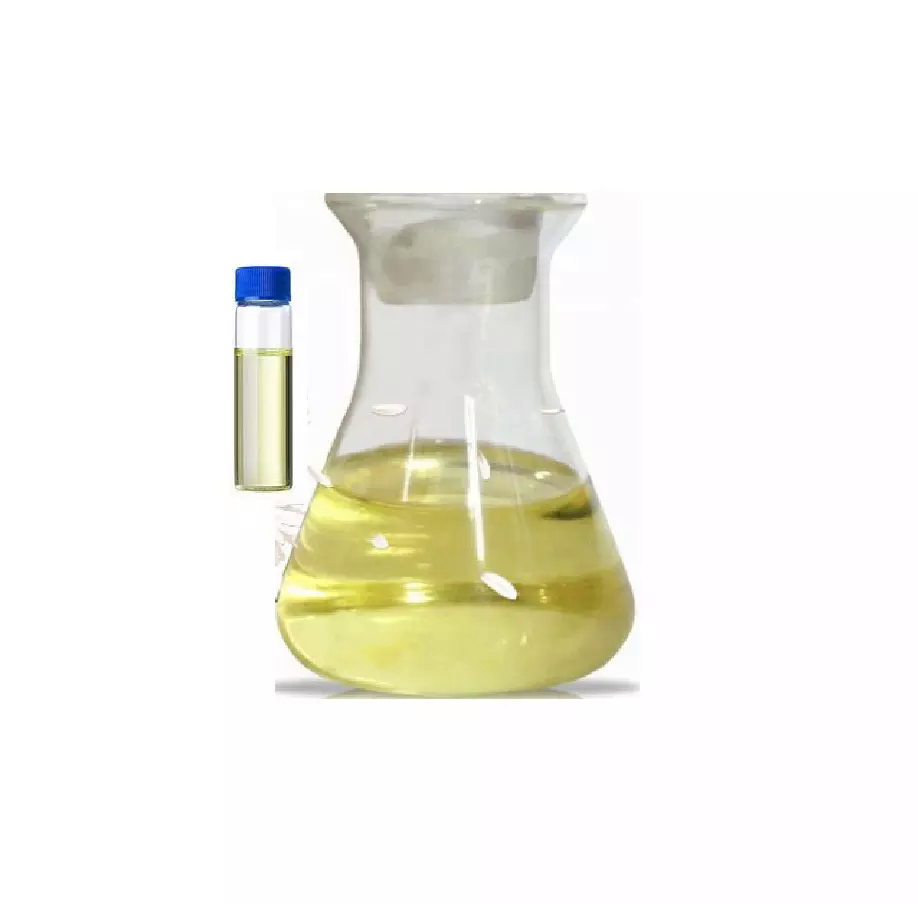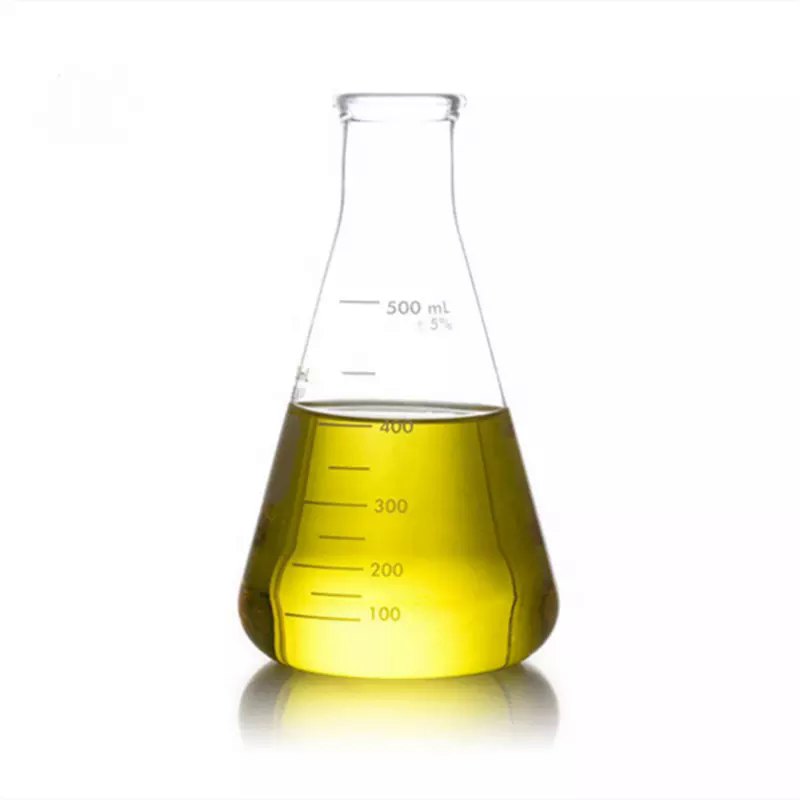Sandalwood oil
- CAS NO.:8006-87-9
- Empirical Formula: C30H48O2
- Molecular Weight: 0
- MDL number: MFCD00148248
- EINECS: 616-898-8
- Update Date: 2024-11-14 20:10:21
What is Sandalwood oil ?
Chemical properties
Sandalwood oil is obtained by steam distillation of the heartwood of sandalwood
trees, formerly mainly from the East Indian species Santalum album L.
(Santalaceae). It is a slightly viscous, almost colorless to yellow liquid with a characteristic,
sweet, woody, long-lasting odor.
d2020 0.968–0.983; n20D 1.5030–1.5090; α20D ?21 ° to ?12 °; solubility: 1 vol ≤ 5 vol
of 70% ethanol at 20 °C; ester number: max. 10; free alcohol content (calculated
as santalol): min. 90%.
Santalum sandalwood oil consists almost exclusively of closely related
sesquiterpenoids; by far, the main constituents are the alcohols α-santalol, 41–55%, and β-santalol, 16–24%. Mainly responsible for
the odor is β-santalol.
The trees cultivated for oil production must be at least 30 years old to make oil
production profitable. The oil yield, calculated on the amount of wood used for
steam distillation, is 4–6.5%.The oil was formerly produced in India and Indonesia
in annual quantities of some 100t. In the past decades, the natural resources
in India are on the decline and the production in Indonesia has decreased
significantly. Alternatively, Australian sandalwood oil has been introduced on the
market. This oil type is obtained from Santalum spicatum (R.Br.) A. DC. It also
contains santalols as main constituents but differs somewhat in the remaining composition.
Australian sandalwood oil is a colorless to slightly yellow viscous liquid, d2020 0.945–0.980; n20D 1.500–1.517; α20
D ?16 ° to +4 °; solubility: 1 vol≤5 vol of 70%
ethanol at 20 °C. α-santalol 15–25%; α-santalol 5–20%.
Chemical properties
East Indian sandalwood essential oil is steam-distilled from comminuted dried, ground roots and wood chips. It has a strong, warm, woody odor
Physical properties
The oil is a pale-yellow to yellow liquid. It is soluble in most fixed oils, mineral oil (sometimes with haziness) and propylene glycol. It is insoluble in glycerin
The Uses of Sandalwood oil
sandalwood oil (Santalum album)(santal; santalum) is credited with astringent, anti-inflammatory, anti-bacterial, tonic, stimulant, cooling, and soothing properties. It is also considered a good anti-septic in cases of acne and an astringent for oily skin. There are indications that sandalwood oil may promote epidermal cell turnover as some report it stimulates fibroblast growth. Sandalwood could help prevent the skin dryness associated with seborrheic dermatitis, psoriasis, and eczema. In addition, some manufacturers utilize it as a natural colorant to give products a light red or rose tone. Sandalwood oil might produce a rash in hypersensitive people, especially if it is present in high concentrations. It is produced by distillation of the inner wood.
The Uses of Sandalwood oil
Wood in boxes and carvings, as incense. Oil in perfumes and as fragrance in creams and lotions.
The Uses of Sandalwood oil
Indian Sandalwood oil is a fragrance for use in various perfumed products like soap, after-shave lotions, colognes, and cosmetics; Mimusops; cedarwood; Clary sage; Casteoreum.
Definition
Extractives and their physically modified derivatives. Santalum album, Santalaceae.
Essential oil composition
East Indian sandalwood essential oil consists mainly of α-santalol (90%) with traces of phenols, lactones and terpenes. The oil obtained from the heartwood of the plant contains approximately 90% of α- and β-santalols and several other minor components including sesquiterpene hydrocarbons (~6%). The santalols are responsible for the pleasant odor. The seed oil contains stearolic acid and santalbic acid.
Safety Profile
Low toxicity by ingestion and skin contact. A sktn irritant. When heated to decomposition it emits acrid smoke and irritating fumes.
Properties of Sandalwood oil
| Boiling point: | 276 °C(lit.) |
| Density | 0.974 g/mL at 25 °C(lit.) |
| refractive index | n |
| FEMA | 3005 | SANDALWOOD YELLOW OIL (SANTALUM ALBUM L.) |
| Flash point: | >230 °F |
| storage temp. | 2-8°C |
| color | Colorless tosltly yellow viscous oily liquid |
| Odor | sandalwood odor |
| optical activity | [α]20/D 15°, neat |
| Stability: | Stable. Incompatible with strong oxidizing agents. |
| CAS DataBase Reference | 8006-87-9 |
| EPA Substance Registry System | Oils, sandalwood (8006-87-9) |
Safety information for Sandalwood oil
| Signal word | Warning |
| Pictogram(s) |
 Exclamation Mark Irritant GHS07 |
| GHS Hazard Statements |
H315:Skin corrosion/irritation H317:Sensitisation, Skin H319:Serious eye damage/eye irritation H335:Specific target organ toxicity, single exposure;Respiratory tract irritation |
| Precautionary Statement Codes |
P280:Wear protective gloves/protective clothing/eye protection/face protection. P302+P352:IF ON SKIN: wash with plenty of soap and water. P305+P351+P338:IF IN EYES: Rinse cautiously with water for several minutes. Remove contact lenses, if present and easy to do. Continuerinsing. |
Computed Descriptors for Sandalwood oil
Abamectin manufacturer
Expo Essential Oils
Norex Flavours Private Limited
New Products
4-AMINO-TETRAHYDRO-PYRAN-4-CARBOXYLIC ACID HCL 4-(Dimethylamino)tetrahydro-2H-pyran-4-carbonitrile 4-Aminotetrahydropyran-4-carbonitrile Hydrochloride (R)-3-Aminobutanenitrile Hydrochloride 3-((Dimethylamino)methyl)-5-methylhexan-2-one oxalate 1,4-Dioxa-8-azaspiro[4.5]decane 5-Bromo-2-nitropyridine Nimesulide BP Aceclofenac IP/BP/EP Diclofenac Sodium IP/BP/EP/USP Mefenamic Acid IP/BP/EP/USP Ornidazole IP Diclofenac Potassium THOMAIND PAPER PH 2.0 TO 4.5 1 BOX BUFFER CAPSULE PH 9.2 - 10 CAP SODIUM CHLORIDE 0.1N CVS ALLOXAN MONOHYDRATE 98% PLATINUM 0.5% ON 3 MM ALUMINA PELLETS (TYPE 73) LITHIUM AAS SOLUTION 2-Bromo-1-(bromomethyl)-3-chloro-5-nitrobenzene 2-Bromo-3-nitroaniline N-(3-Hydroxypropyl)-N-methylacetamide 3-Bromo-6-chloropyridazine 4-ethyl-3-nitrobenzoic acidRelated products of tetrahydrofuran








You may like
-
 8006-87-9 Sandalwood oil 98%View Details
8006-87-9 Sandalwood oil 98%View Details
8006-87-9 -
 8006-87-9 98%View Details
8006-87-9 98%View Details
8006-87-9 -
 8006-87-9 98%View Details
8006-87-9 98%View Details
8006-87-9 -
 Sandalwood oil, natural CAS 8006-87-9View Details
Sandalwood oil, natural CAS 8006-87-9View Details
8006-87-9 -
 1823368-42-8 98%View Details
1823368-42-8 98%View Details
1823368-42-8 -
 2-(3-(tert-butyl)phenoxy)-2-methylpropanoic acid 1307449-08-6 98%View Details
2-(3-(tert-butyl)phenoxy)-2-methylpropanoic acid 1307449-08-6 98%View Details
1307449-08-6 -
 Ethyl 3-(furan-2-yl)-3-hydroxypropanoate 25408-95-1 98%View Details
Ethyl 3-(furan-2-yl)-3-hydroxypropanoate 25408-95-1 98%View Details
25408-95-1 -
 Lithium ClavulanateView Details
Lithium ClavulanateView Details
61177-44-4